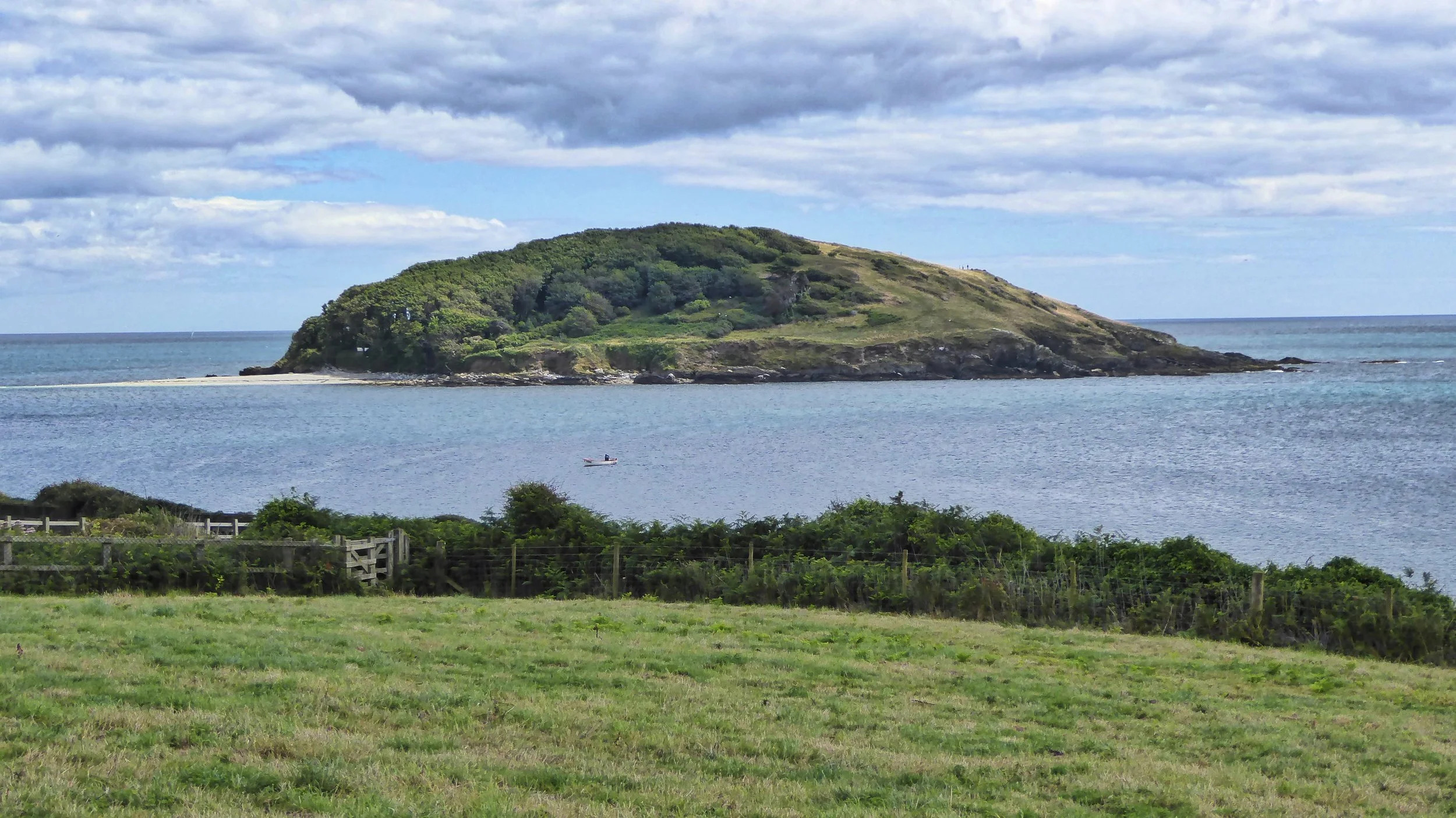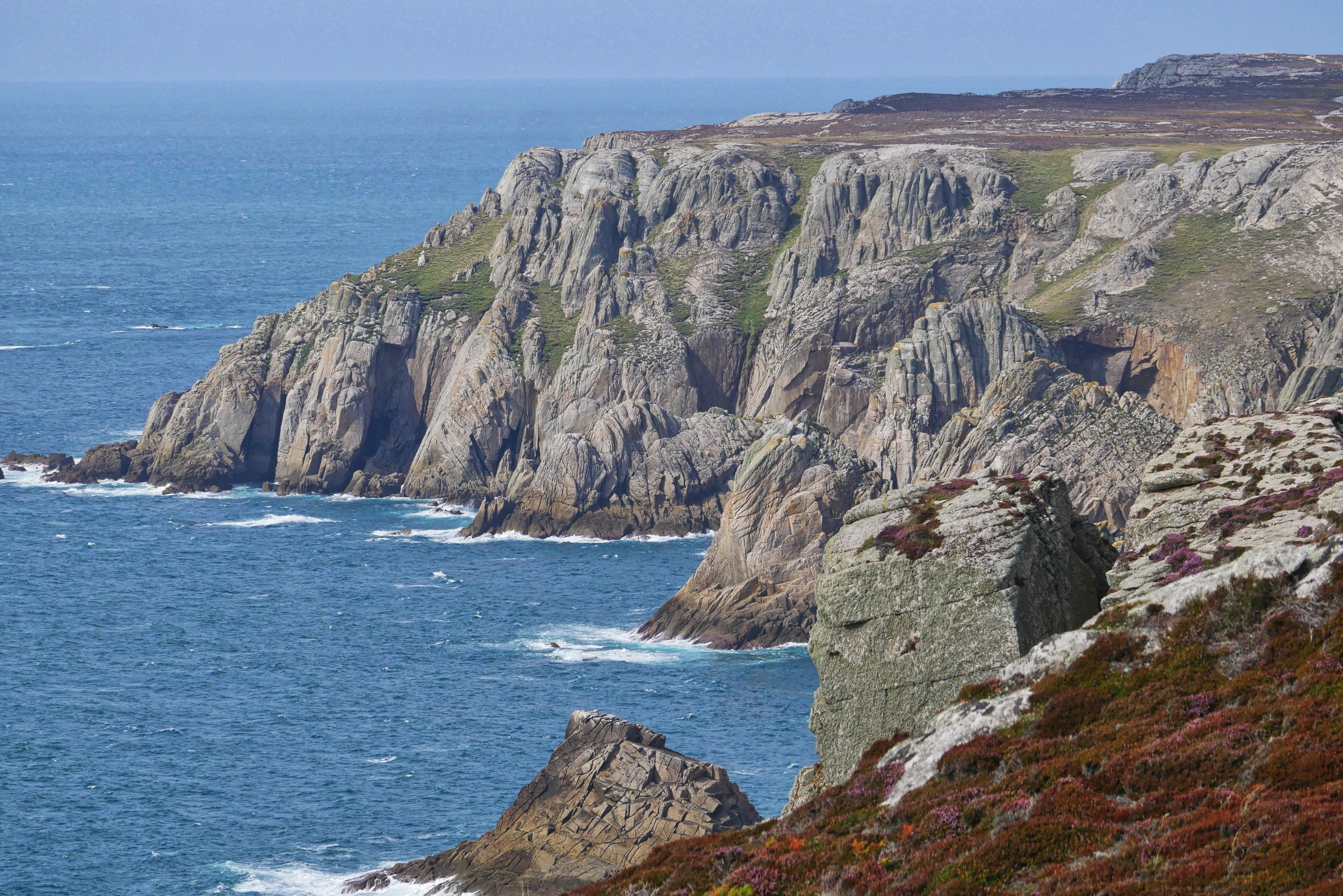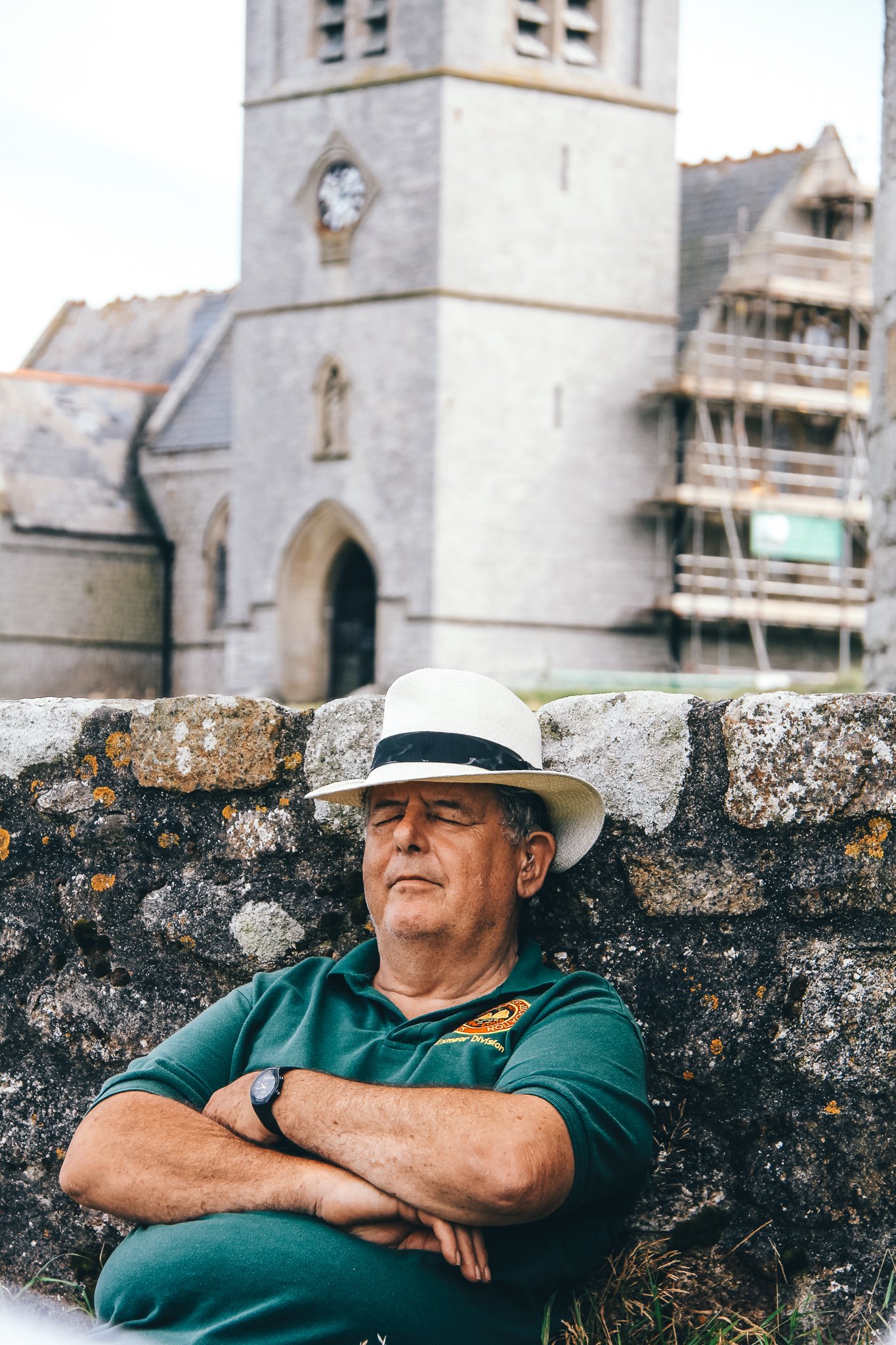New Year Ideas for Island Walks
As this is the time of year when we’re supposed to be making resolutions - or, at least, pronouncing promises to ourselves that are difficult to keep - why not throw a few exciting ones in to the mix? The theory is this: such resolutions are pleasing to contemplate - and, if they come off, you will be hugely rewarded for your efforts.
That’s a win-win situation because merely planning say, for example, a walking adventure somewhere very special can help wile away the dark damp winter evenings still to come.
Landing at Flat Holm
Here’s my News Year’s Resolution Classic Walks special for 2023 - based on the idea of hiking in some of the Westcountry’s most difficult to reach, but beautiful and hugely rewarding, locations…
By which I mean islands. Yes, the isles surrounding this peninsula take a lot more time and effort to reach than our inland hills and dales - but spend a day circumnavigating one of them and you will be rewarded with memories that will last longer, and be far more treasured, than can be gleaned from most walks in the region.
There is something very special indeed about sailing or flying to a lump of rock out in the ocean - and the isles I mention here have little footpaths that allow you to circumnavigate the place so that you can return home really believing you achieved a full blown expedition rather than just a hike.
MS Oldenburg off Lundy
LUNDY
Perhaps the outstanding example of an ocean-going adventure is Lundy. Most people who travel out to the island attempt the circumnavigation of this three mile long, half-mile wide, lump of rock located where the tide races of the Bristol Channel meet the Atlantic.
Strolling down the main drag to the Lundy landing
Basically, Lundy is a high plateau surrounded by cliffs - the walk people like to do most is a clockwise circumnavigation of this maritime tableland.
After visiting the small village at the top of the track from the landing jetty for refreshments or supplies, walk past St Helena's Church and west to the cliffs of South West Point, and then turn north towards Goat Island.
This is where you might spy a black rabbit - a breed indigenous to Lundy. Walking north past Old Light on Beacon Hill, we cross Ackland's Moor which boasts the unlikely remains of a nine hole golf course as well as what is supposed to be an airstrip.
View from up inside Old Light, Lundy
Earthquake is the strange name of the next corner of island, which we find after crossing the Quarter Wall. Lundy is divided into four by the three great walls placed at quarter intervals that cross from one side of the island to the other.
The area around Earthquake, Lundy
At Earthquake there are chasms that you can't see the bottom of - apparently caused by the Lisbon earthquake of 1755. It is a good place from which to view the sea-bird colonies that cling to the cliffs around Jenny's Cove.
Now we march past Halfway Wall and Threequarter Wall, to the quiet wilderness of North End. On the way you may pass some of the island’s goats and see the wild Soay sheep which are Lundy's answer to antelope.
Beyond Jenny’s Cove, Lundy
Rounding North End we begin our journey down the eastern side of the island. Soon we come to Gannets' Rock where you can, if you’re lucky, see the local seal colony lolling about on the rocks far below.
Then it is south again, past the remains of the old gun battery called Brazen Ward. Once across Threequarter Wall, you can chose either to walk directly south along the island’s central track, or take the more interesting coast path.
This will take you down the east side of the island, past the historic quarries and through the rhododendron jungle where you might see a Sika deer or two. Eventually a steep path will take you back up to Lundy’s small settlement where you can enjoy a well earned pint at the Marisco Tavern.
You might need a snooze after this Lundy hike
FLAT HOLM
The Lewis Alexander is the sturdy little 45-seater passenger ferry that services an isle which some might argue is not really part of the Westcountry. Flat Holm is officially the most southerly bit of Wales – but as it is twin to Somerset’s Steep Holm, and as it is very much part of the Bristol Channel scene and can be spotted from a lengthy section of this region’s coast – it has a rightful place in this article.
Approaching Flat Holm
And it’s fun to walk around. Flat Holm, or Ynys Echni to give it the unpronounceable Welsh name, is a limestone island lying seven miles north west of Brean Down.
Not surprisingly, being situated plonk in the middle of a busy seaway, the island has a long history, dating at least from the Bronze Age. There have been religious recluses, saints and their disciples, smugglers, farmers, gunnery officers, lighthouse keepers, hotel keepers, the doctors and nurses of a cholera hospital – it was even the founding site of the Bristol Channel Mission, which later became the Mission to Seafarers.
Old canon lie around on Flat Holm
Now it is home to a warden and his two helpers, occasional volunteers, occasional campers and work-group members, and gulls. Lots and lots of gulls.
Flat Holm is not flat. The cliffs at the south-eastern corner of the round-ish isle rise some 160 feet from the swirling waves. It is on this high point that the 90 foot lighthouse stands. There’s been a warning light here for many years - the first one was a simple brazier mounted on a wooden frame. But in 1733 the Society of Merchant Venturers of Bristol claimed it was unreliable and petitioned the authorities to erect a proper lighthouse. The tower was eventually in operation by 1738.
The much celebrated Flat Holm leeks
From what could be described as the island’s summit the ground slopes gently down towards the north and west and there are the remains of human yesteryear to be found almost every step of the way.
Flat Holm’s first human occupants were denizens of the late Bronze Age - more than 1000 years later it became a retreat for Saint Cadoc, who apparently lived on the island as a hermit.
After the saints, came the Anglo-Saxons - who called the island Bradanreolice. “Reolice” said to come from an Irish word meaning graveyard – adding fuel to the belief that Flat Holm had religious significance as a place of burial to people at the time.
Ruins of Flat Holm’s old sanatorium
The Anglo-Saxon Chronicle records that in 1067, Gytha Thorkelsdóttir, mother of Harold II, the last Anglo-Saxon king of England, stayed on the island before travelling to France after the Norman invasion.
Flat Holm long played a cosy host to smugglers. There is even a legend that various secret tunnels were dug around an old mine shaft.
Next on our round-the-isle hike we come to the island’s sanatorium – now a ruin surrounded by nettles. It was in 1883 that the steamship Rishanglys left three cholera stricken seamen on the island. They had only a canvas tent to be ill in - one of the sailors subsequently died and islanders petitioned for compensation saying they’d lost income from the fact visitors were too frightened to make day trips.
Flat Holm lighthouse
By 1896 an isolation hospital had been built. It is said to be the only isolation hospital sited on a British offshore island. The last patient to die there was a victim of bubonic plague - cremated on the island at the end of the 19th century.
Today people go to Flat Holm for fun rather than for medical purposes. The place is a Local Nature Reserve, managed under The Flat Holm Project which is supported by a registered charity.
Find out more about Flat Holm by visiting www.flatholmisland.com
ST GEORGE’S OR LOOE ISLAND
St George’s, or Looe Island as it’s sometimes called, has all the attributes of other-worldliness necessary for an oceanic adventure, which is probably what so famously inspired two sisters from the Home Counties to buy it many years ago.
St George’s or Looe Island
More about them later, first the vital statistics: St George’s is 22.5 acres of rocky, woody, heathy beauty lying just off a place called Hannafore, which is a kind of seaside suburb of West Looe.
In a way, its shape on the map resembles a tiny Cyprus. The eastern peninsula points toward the heart of the English Channel and is backed by a 150 foot hill, skirted on its northern edge by dense woodland. The upper and western flanks play host to windswept heath, now being grazed by black, agile, Hebridean sheep.
Those sheep have their own story to tell and it relates to the very recent history of the island. They were introduced by the Cornwall Wildlife Trust (CWT) which now manages St Georges, having been bequeathed the place by the two Atkins sisters, Evelyn and Babs in 2004.
Evelyn wrote several books about the subject of looking after a tiny kingdom, including the celebrated We Bought an Island.
The blurb on the back of the book tells the long story succinctly: “Evelyn Atkins and her sister Babs were two middle-aged sisters who lived in suburban Surrey and led the humdrum life of so many commuters. Like other people Evelyn dreamed of owning an island. And Evelyn was a very determined daydreamer…
There is only one reason to hurry when walking around tiny St George’s, and that is when you are keeping oyster catchers off their eggs – which is what we were doing by standing feet away from a nest precariously placed on the beach.
Suddenly we found ourselves in a delightful wooded hinterland – the kind of peaceful sylvan place you most definitely do not associate with windswept Westcountry islands. This tall sycamore woodland is on the protected north-eastern slope, away from the ruinous salt-laden gales of the west.
Past a tiny dingly-dell cottage we walk, past the grave of one of the sisters and some vegetable gardens containing the aforementioned artichokes, to the main house and its annex situated at the base of the eastern peninsula.
The house has that Miss Havisham feel so beautifully described by Charles Dickens in Great Expectations… Like the whole island, it is a place arrested in time.
The public can visit the island aboard Cornwall Wildlife Trust’s 12 passenger boat - to find out more visit http: www.cornwallwildlifetrust.org.uk/nature_reserves/

























